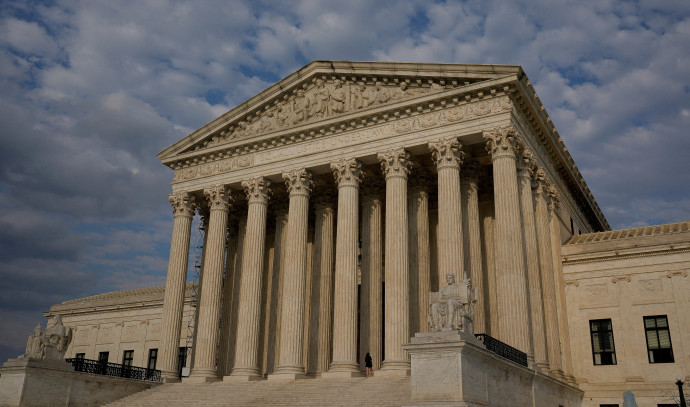The US Supreme Court ruled against the use of affirmative action and race-based admissions programs in American schools on June 29, but some may be confused about the impact scope of the decision.
The Jerusalem Post spoke to Samantha Chaifetz, co-chair of DLA Piper‘s Appellate Advocacy practice, to explore the new paradigm created by the ruling.
Affirmative action refers to programs to provide positive discrimination to certain racial groups to ostensibly write historical wrongs and their lasting impact on these people. In schools, such programming has had a turbulent history.
What is affirmative action and what does the US Supreme Court ruling about it mean?
Chaifetz explained that the ruling followed a number of cases such as the 1978 Regents of the University of California v. Bakke case and the 2016 Fisher v. University of Texas at Austin case. Such cases had clarified the boundaries of affirmative action, such as the Bakke decision which rejected quotas and or Gratz v. Bollinger which rejected point systems, but until now it had been acceptable practice for schools to take race into account.
On June 29, the court took “a very critical look at programs and at the history and the majority [opinion[ at least purports to be applying the metrics and the factors articulated in prior cases and says that what they are doing is the culmination of these prior cases that required these programs to have objective, measurable goals and these programs to have an end date,” said Chaifetz.
The Students for Fair Admissions v. Harvard and Students for Fair Admissions v. University of North Carolina ruling had over 60 amicus briefs filed in support of the schools, and 30 filed on behalf of Students for Fair Admissions. Chaifetz noted that the cases addressed both a private entity and state school.
“The universities were defending these programs as important to the compelling objective of ensuring diversity in university bodies,” said Chaifetz. “And those objectives have long been recognized as compelling interests that educational benefits flow from having a diverse student body.”
On the other side of the argument, Chaifetz said that “Those objecting to the programs were stressing the idea that continuing to use race in admissions necessarily leaves race to be used as a negative stereotype against certain groups and that it is hurting as much as it is helping. And they took the view that it can’t be reconciled with the 14th Amendment or with Title Six of the Civil Rights Act.”
Title Six prohibits discrimination on the basis of race, color, national origin in federally funded or assisted programs, and the 14th Amendment protects equality under the law.
While the Supreme Court said that diversity objectives were laudable, said Chaifetz, they lacked the focus and measurability to warrant continued use.
“The majority opinion by Chief Justice John Roberts, concludes that race can’t be a factor employed as such in admissions to universities,” said Chaifetz, but she noted that it was interesting that military universities were exempt after the Justice Department filed a brief asking the court not to include them. “Another note about the majority decision is that it stops short of suggesting that universities can’t consider race in any way. It acknowledges that it could still consider a student’s discussion of how race has affected their lives, so long as that discussion is concretely tied to a quality of character or unique ability that the particular applicant can contribute to the university.”
The majority opinion also says that applicants can discuss the challenges they’ve overcome which may include race.
“The use of race in college admissions is dead,” said Chaifetz, but schools have been preparing for this outcome.
Other forms of diversity programs, such as economic backgrounds, may have a correlation with race but are distinct. Chaifetz said that many universities had stated that they would comply with the law but were committed to having diverse student bodies. Outreach to diverse communities and mentorship programs could still foster diverse applicants. While guidelines had not yet been published, Chaifetz expected the schools to pay careful attention to them.
Going forward, Chaifetz said that it might be possible that courts would see further challenges to school admissions policies using lower courts to enforce the decisions, and could see the application of the ruling applied to other school policies such as faculty hiring. There have also been calls to cancel legacy admissions, giving preferential treatment to the children of alumni.
In the private sphere, Chaifetz said that DLA Piper was taking note of the opinion of Justice Neil Gorsuch, who noted the proximity of Title Six to Title Seven, “which prohibits discrimination on the basis of race in private employment.” While that wasn’t the issue at hand, “he goes out of his way to draw this parallel and to say that both Title Six and Title Seven codify the same categorical rule.”
“We’re likely to see follow up litigation in challenges to diversity initiatives that private employers have,” said Chaifetz. “So I think for a firm like ours, we’re very much looking at how we have employment lawyers who are ready to counsel their clients and to review their company’s diversity and inclusion initiatives to help ensure that they’re approaching these areas with awareness.”



